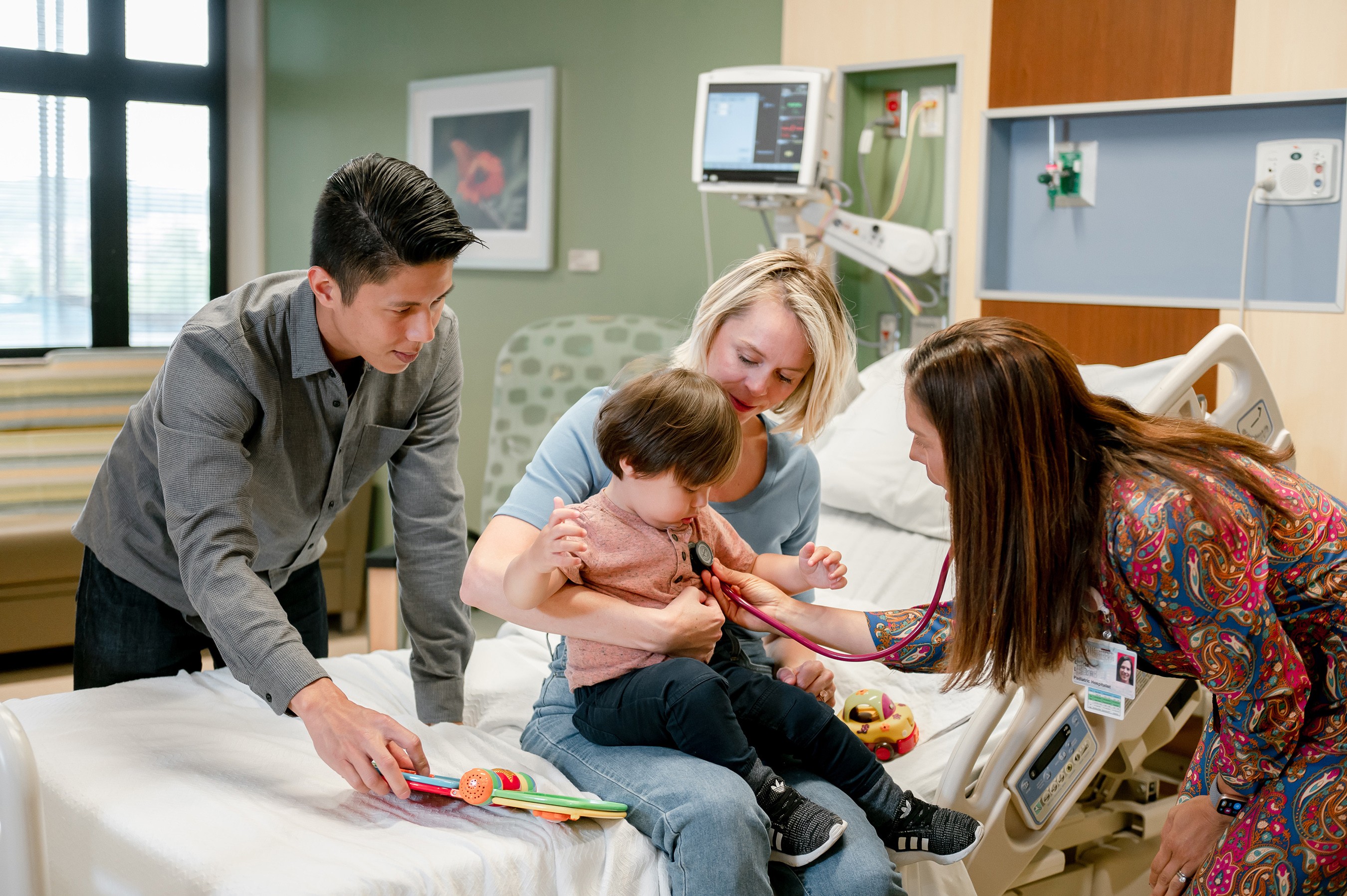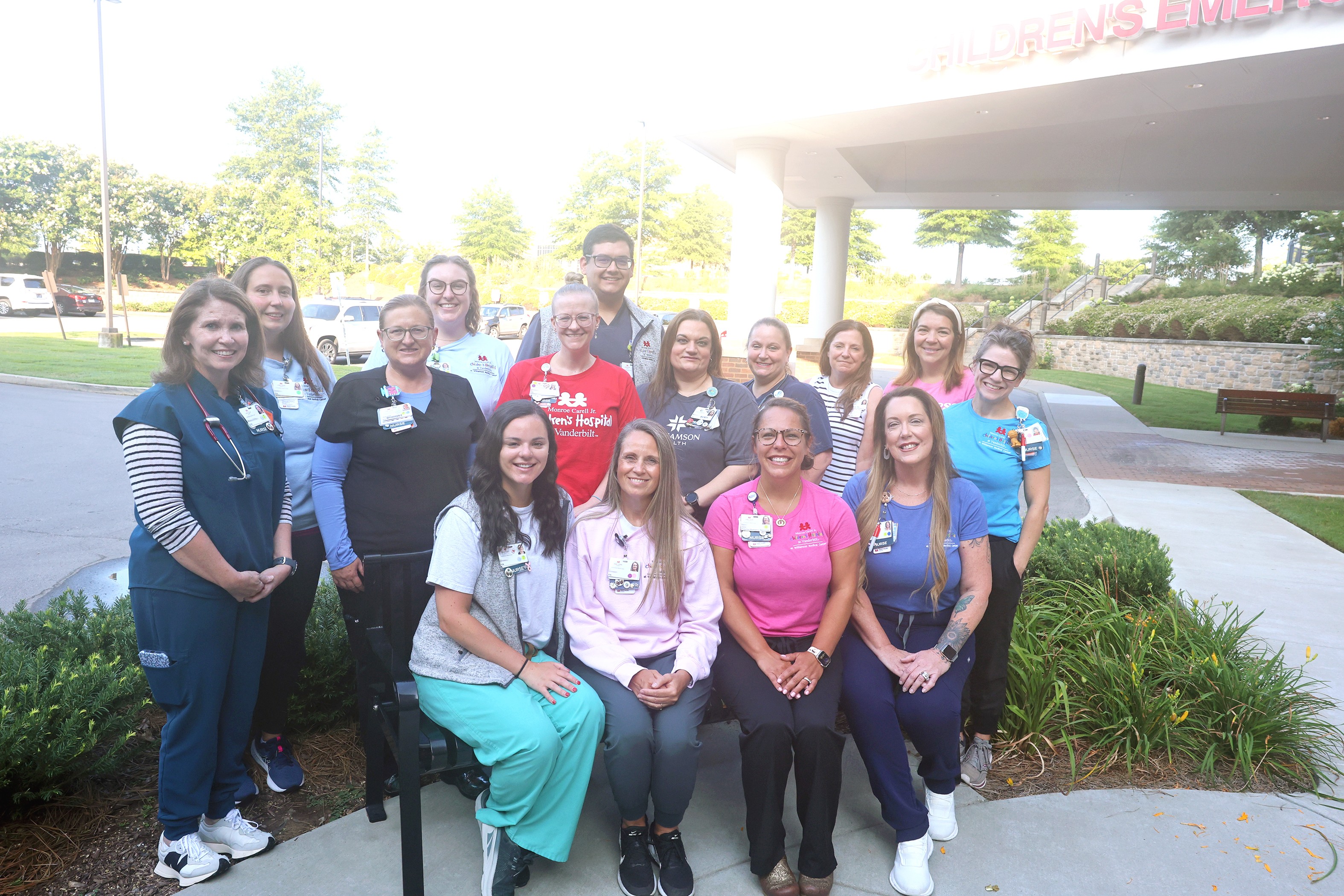
.png)
For 10 years, Monroe Carell Jr. Children’s Hospital Vanderbilt at Williamson Medical Center has Provided Expert, Compassionate Care for Kids—Right Here in Williamson County.
with Williamson Health
When your child is sick or hurt, it’s difficult to stop panic from setting in. A trip to the emergency room (ER) can be nerve-wracking, even if you know the situation isn’t life-threatening.
While they understand those fears, the staff at Monroe Carell Jr. Children’s Hospital Vanderbilt at Williamson Medical Center wants families in Williamson County and the surrounding region to know they have access to exceptional pediatric care close to home—even in an emergency.
“Here at Monroe Carell Jr. Children’s Hospital Vanderbilt at Williamson Medical Center, we have dedicated pediatric units so children can get the specialized care they need,” said Erin Soto, Director of Pediatrics. “We’re able to keep patients and families close to home, and we can quickly stabilize anything here—even if a patient needs to be transferred to another facility later. We offer individualized, family-centered care right here in Williamson County, without having to go downtown.”
This summer, Williamson Health celebrated the tenth anniversary of having these dedicated pediatric services at Williamson Medical Center. The state-of-the-art spaces are a refuge for families with sick kids, providing family-focused pediatric care close to home.
“The equipment here is top-notch, and so is our staff,” said Carrie Lind, M.D., pediatric hospitalist and Chair of Pediatrics for the Monroe Carell Jr. Children’s Hospital Vanderbilt at Williamson Medical Center. “We can diagnose and resolve most cases that come through our doors, which is not only a convenience but also a reassurance for families in this community.”
Pediatric Care built for Williamson County
Announced in 2013, the Monroe Carell Jr. Children’s Hospital Vanderbilt at Williamson Medical Center opened in July 2015. The community celebrated the newly constructed space —the county’s first dedicated pediatric ER and inpatient unit—with a massive grand opening event that included Williamson County residents Brad and Kimberly Williams Paisley, who generously served as the co-chairs for the capital campaign for the project.
The pediatric services offered here include a distinct eight-bed pediatric ER for children needing urgent care and a dedicated 10-bed pediatric unit for those who need to stay a little longer.
From the very start, the pediatric spaces were designed with children and their families in mind—nurses’ stations feature low counters with rounded edges, while pediatric inpatient rooms include spaces for parents to rest and work so they can stay close to a sick child.
“We are proud to offer a dedicated pediatric emergency department as well as a dedicated inpatient unit—spaces designed to ensure that children and their families feel safe, supported, and genuinely cared for during some of their most vulnerable moments,” said Phil Mazzuca, Williamson Health CEO. “We are committed to delivering high-quality, compassionate care to individuals of all ages in our community. Providing specialized services for children is an important part of that mission—ensuring they receive exceptional care in an environment tailored to their unique needs.”
Featuring a waiting area designed specifically for kids and families, the pediatric ER is open 24/7 and staffed with board-certified pediatric emergency medicine physicians and pediatric-trained nurses. The pediatric inpatient unit includes both a library and a playroom, so patients can find a safe place to play and be themselves, even during a hospital stay.
A Decade of Family-Centered Care
The providers in the pediatric ER and inpatient unit routinely treat a variety of pediatric issues ranging from asthma and allergic reactions to skin infections, dehydration and more serious issues.
While the most severe trauma cases are transferred to Monroe Carell Jr. Children’s Hospital at Vanderbilt in Nashville, the local team is fully equipped to care for the majority of pediatric patients who present to the hospital, providing treatment, admitting them when appropriate, or stabilizing them for transfer when necessary.
According to Soto, having a separate pediatric ER plays a vital role in providing timely, specialized care to pediatric patients and their families right where they live.
“We are kind of like a diamond—it’s very rare to have this level of pediatric care in the community,” Soto said. “It’s something we are all very proud of—not only as staff but also as parents and members of the community.”
Making a Difference through Family-Centered Care
For Dr. Lind, every day is a reminder of why she wanted to work in pediatric medicine. She loves having the time to sit down with families, work collaboratively to figure out what is wrong and how to help a child feel better.
“One of my favorite things about being in pediatric hospital medicine is that we’re seeing patients with diagnostic uncertainty, meaning we don’t really know what’s going on with the patient when they get here,” she said. “I really have time to sit down with the family and figure out what’s going on and what brought them to this point.”
One of her most memorable cases, Dr. Lind recalled, involved an 18-day-old baby with feeding issues who had been admitted to the inpatient unit.
“Having trouble eating isn’t unusual for newborns, but we admitted him because he had lost a significant amount of weight,” Dr. Lind said. “When I talked with the mom and examined the baby, I also noticed the baby was losing muscle tone.”
As Dr. Lind observed the baby, she began to suspect the baby might be suffering from infant botulism, a life-threatening condition caused by bacteria that results in progressive muscle weakness. Infant botulism can be caused by exposure to honey or other environmental factors. Because infant botulism must be treated quickly and the medication has to be flown in from the West Coast, Dr. Lind had to start a treatment plan based on the suspected diagnosis.
“We treated the baby, and he got better,” Dr. Lind remembered. “That Christmas, a few months later, the family visited to bring me a card and flowers to tell me how much it meant to them that I took the time to talk with them and figure out what was going on.
“It’s really a case that makes me proud of what I do,” she continued, “and it reminds me of why I work in pediatric medicine.”



















